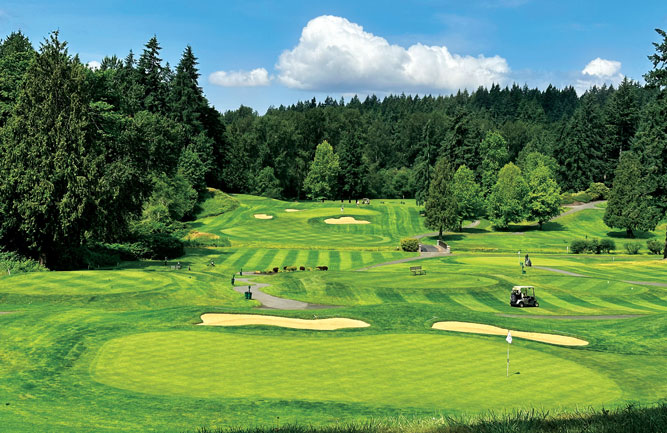State of the golf industry: The big wheel keeps on turning
Updates on the state of the golf industry keep coming from all facets of the game. I think of the industry as a big wheel and the spokes are made up of the many specializations that go into the single hub, the game of golf.
Make up your own list, but from the developer who finances a project to the groups who operate the clubs and maintain the grounds, there is an unmistakable link.
All are dependent to different degrees on a healthy golf industry. However falling participation, a sluggish economy and sometimes arbitrary regulatory actions nibble away at each spoke of the wheel.
One of the key spokes in the golf industry wheel is the golf course architect. Many are aware that new projects have been drastically curtailed because of the economy. Some architects have been able to land new projects in foreign countries to maintain revenue, but design associates of the major firms have lost jobs because of the economic slowdown. No sector of the industry is immune.
I recently sat down with golf course architect Ed Beidel, who had worked primarily in the Pennsylvania/Maryland area before moving to Florida in 2008.
Beidel became a member of the American Society of Golf Course Architects (ASGCA) in 1988. He served as a committee member and chairman of the membership committee for six years. I wanted to discuss the current issues facing golf from a different perspective than the superintendent’s because course design and the subsequent required maintenance has sparked many issues that our segment of the industry now faces.
“I had six projects lined up in 2007, set to begin that year and in 2008. The bottom fell out and all of them are on hold. I keep in touch with them regularly to see if any have come back to life, and in the meantime I still do site assessment plans for courses looking to reduce costs and make effective changes to operations,” Beidel told me.
As for the key issues, Beidel says, “The water situation is scaring the (heck) out of me. American golfers have become so spoiled to expect wall-to-wall green, manicured courses. It’s going to get really ugly when the water authorities finally turn off the spigot!”
Beidel said that most golf course designers appreciate and understand the environment they are building on. “In cases where it is already bulldozed and barren and the course winds totally through home sites, our creations become a thriving green space for wildlife. In other settings we try to fit the golf holes into the natural settings with minimum impact.”
From my knowledge of the golf course architects I have met over the years, I would say that is a fair statement, but sometimes courses are built that tend to become real maintenance challenges. Beidel replied, “Architects work for the owners and customer satisfaction is mandatory. All I can do is offer up my professional opinion of what I see as aesthetically appealing, operationally sound and economically cost effective. If they want a waterfall, severe greens and steep bunker faces, they get it!”
We discussed different ways to grow the game, and Beidel says it’s something he thinks about often. He says in recent years he’s advocated for smaller, more affordable courses. Cheaper to maintain, cheaper to play.
“In order for a course to survive and prosper it must have an energetic staff, willing to think outside of the box. It must be willing during lean times and seasonal slow times to set aside nine holes and market 3-hole, 6-hole and 9-hole rounds appropriately priced and track the results to see if you get new and repeat business.”
I think Beidel is saying what many of us already know: we have to change the way we do business. Change is hard, especially in golf. But what is the alternative?










